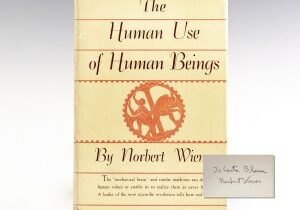J.R.R. Tolkien’s The Hobbit and the Lord of the Rings trilogy are some of the most iconic and sought after first editions books on the market today. We could wax long about Tolkien’s imaginative style or the ways in which the books have affected our culture or children’s fantasy writers after him, but much has been written on this topic. Since we are a rare book firm, what we want to do today is to explain some of the first edition issue points of both of these classic works.
The Hobbit, or There and Back Again, better known simply as The Hobbit, was first published in England in 1937 by George Allen & Unwin Ltd. with a printing run of 1,500 copies. The copyright page has the statement, “First Published in 1937” with no mention of additional printing dates.
The boards are green (approximately 7.5 x 5.3 inches) with pictorial decorations of a dragon and mountain range with sun and moon to the front and back . There are 310 numbered pages and the top page edges are stained green, with the other sides being white.

Thror’s map is shown on the front endpapers and Wilderland to the rear endpapers, printed in both in red and black ink. The book itself has no color illustrations, but there are ten black-and-white illustrations, which are listed on the page preceding chapter 1. All of the artwork in the book, including the boards and dust jacket was done by Tolkien himself.
The dust jacket has an error on the rear flap, where Dodgson is incorrectly spelled Dodgeson, and this mistake was hand corrected by the publishers.
A number of errors can be found in the text of the first edition. The following are listed in J.R.R. Tolkien: A Descriptive Bibliography by Wayne Hammond.
1. page 14, lines 17-18, ‘find morning’, for ‘fine morning’.
2. page 17, lines 29-30, “So you have got here at last! what (for That) was what he was going to say’.
3. page 25, line 11, ‘more fierce then fire’ for ‘more fierce than fire’.
4. page 62, lines 2-3, ‘uncomfortable palpitating’ for ‘uncomfortable, palpitating’
5. page 62, line 31, ‘their bruises their tempers and their hopes’ for ‘their bruises, their tempers and their hopes’.
6. page 64, line 21, ‘where the thrush knocks’ for ‘when the thrush knocks’.
7. page 85, line 10, ‘far under under the mountains’ for ‘far under the mountains’.
8. page 104, line 17, ‘back tops’ for ‘black tops’.
9. page 147, line 16, ‘nor what you call’ for ‘not what you call’.
10. page 183, line 26, reversed double quotation marks for the word ‘Very’.
11. page 205, line 32, ‘dwarves good feeling’ for ‘dwarves’ godd feeling’.
12. page 210, line 29, ‘above stream’ for ‘above the stream’.
13. page 215, line13, ‘door step’ for ‘doorstep’.
14. page 216, line 4, ‘leas’ for ‘least’
15. page 229, lines 16-17, ‘you imagination’ for ‘your imagination’.
16. page 248, line 32, ‘nay breakfast’ for ‘any breakfast’.
________________
The first US edition was published by Houghton Mifflin in 1938. The book has tan cloth binding over boards, imprinted with a red hobbit bowing to the left in the upper right of the title on the front. For subsequent printings, the title page was changed to a seated flute player, as the bowing hobbit illustration shows the hobbit wearing boots, which is not accurate to the story. The size is larger than the British edition (approximately 8.3 x 6 inches), but again with 310 numbered pages. The dust jacket is in blue, showing the Hobbiton frontispiece in color and a price of $2.50. The title page shows the outline of the same hobbit bowing similar to the cover and has red endpaper maps, similar to the British edition except that the British maps were black and red. Again, all of the artwork is by Tolkien. The first and second printings both have a mistake in that chapter 7 is titled chapter 6. This was corrected by the third printing.

First US Edition of The Hobbit, showing title page with bowing hobbit, all red end leaf map, and colored frontispiece
________________
Following the success of The Hobbit, Tolkien’s publishers asked if he would write another book about hobbits. Thus, the Lord of the Rings was born. It was a long novel that took a long time in coming, however: it was not completed until 1952, being a length of 1,192 pages. Since it was so large, the publishers felt it should be broken up into three books. This also protected them from financial loss, as they wouldn’t publish the subsequent parts if the first part was a flop.
George Allen & Unwin, Ltd. of London published the first edition of The Fellowship of the Rings in July of 1954, with a mere printing of 3,000 copies. In November of the same year, the second part, The Two Towers was printed, with 3,250 copies made of that run. The Return of the King followed in October of 1955 with 7,000 copies. The first edition copyright pages of these should all have the dates above and no other dates listed. All three feature the jacket design by Tolkien, which is called the Ring and Eye device. It is important to note that the rear jacket flap of all three books lists all three books in the series even though, for example, The Return of the King hadn’t been published when the Fellowship of the Ring was printed. Since the complete series was written and most likely going to be published, the publishers wanted readers to be waiting in expectation for the rest of the series.
We hope that we have helped you understand these issue points and a little of these books’ printing history. If you have any questions about this post or have a first edition you would like to sell, please feel free to contact us.















